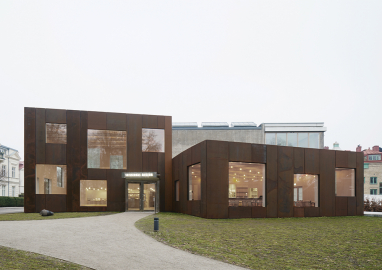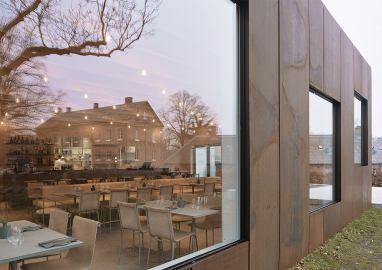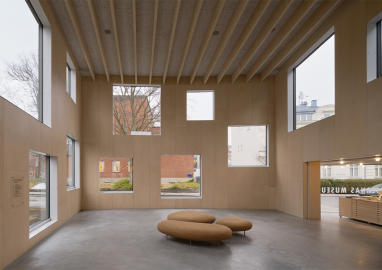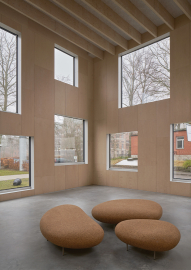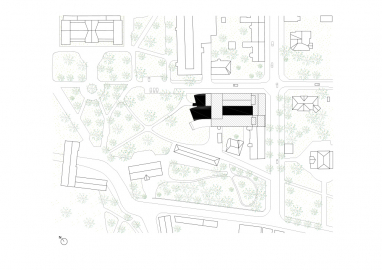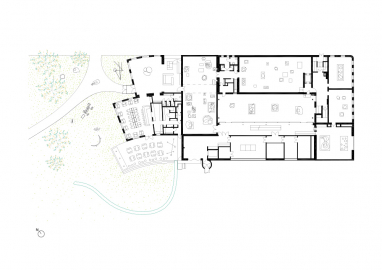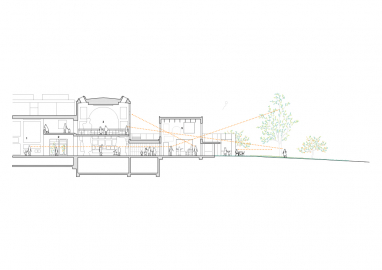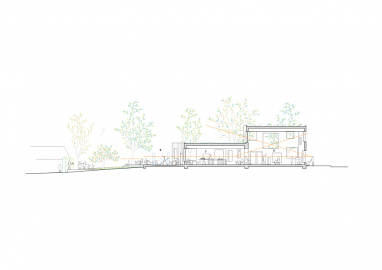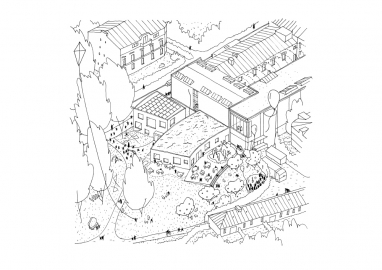Skissernas Museum
Skissernas Museum, Museum of Artistic Process and Public Art
Skissernas Museum has a collection uniquely focused on the artistic process. Since it opened in 1941, it has been extended numerous times, and prior to Elding Oscarson’s extension, the building cluster had formed a closed block facing the park. The new extension opens up to the tall trees of the park with a double height foyer and a restaurant, loosely composed in an aim to reconnect the museum, the park, and the city. The two bent volumes in weathering steel adjusts the perceived direction of the existing block and introduces a new material in relation to the raw concrete and brick of the surrounding university campus. Just as an artistic process evolves with time, the buildings’ materiality will gradually change over time. The floating window layout offers multiple views across the rooms and towards the park, as artworks on a wall. All of the furniture is also designed by Elding Oscarson.
Since Art Historian Ragnar Josephson started documenting the artistic process, about 80 years ago, Skissernas Musuem, has gradually grown to a large cluster of buildings that, apart from housing the world’s largest collection of sketches, is an important carrier of the identity of the Museum. This is the first extension in the museum’s history that solely addresses its interface, with foyer, restaurant, shop and a multi-purpose hall.
The new addition of slightly bent volumes is projecting itself into the existing sculpture park, releasing it’s grip of the street grid and instead latching on to the diagonal approach through the park. This is the axis of entrance that the large extension by architect Hans Westman dated 1959 was designed for. The new foyer space is very tall to take in the grown trees of the park, but also to be able to stand up next to the rather massive existing museum volumes. The new restaurant, however, is due to respect for a more recent addition by architect Johan Celsing, kept low to not intervene with the previous extension’s large window facing the park. The original entrance volume from 1959 becomes integrated as a volume fitting shop and reception.
The weathering steel, favored by sculptors since the material was invented, handles the adjacent brick and rough concrete architecture, yet contrasts to those in its sharper detailing. The free arrangement of the windows is composed carefully to get particular views from, into, and through the added building volumes – to reach a transparency without an actual large surface of glass.
For the multi-function hall in the existing museum courtyard, a great variation in height of the surrounding buildings and a problem to transfer the loads to the underlying structure, urged for a solution with a roof soaring high, resting on four columns, surrounded by a glazed clerestory. The roof is spanning 27 meters and its ceiling is a hovering plate of mirroring aluminum – a space not clearly indoor, but keeping the open-air character of the existing courtyard.
The furniture of the restaurant, foyer, and shop are all designed by Elding Oscarson, and are deliberately transmitting the unfinished character of a sketch, or prototype. As a total, the intention is for the new addition is to add a valuable experience of architecture and making the Museum a more functional place for people to meet.

